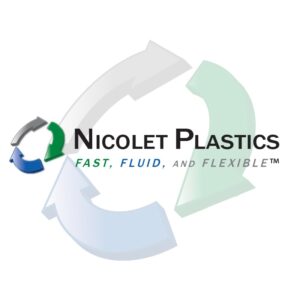January 31, 2024
What is Plastic Injection Molding
The manufacturing industry has advanced significantly in the past few decades thanks to innovative technologies like plastic injection molding. This technique has revolutionized the production of plastic products by providing a cost-effective and efficient method for mass production. However, despite its widespread use, only a few are familiar with the intricacies of this process.
So let’s dive into what plastic injection molding is and how it works, giving you a comprehensive understanding of one of the most crucial techniques in modern manufacturing. Whether you’re new to the industry or an experienced professional looking to expand your knowledge, keep reading to learn more about plastic injection molding.
What is Plastic Injection Molding?
Plastic injection molding is a manufacturing process that produces high-volume plastic parts and components. It utilizes a hydraulic or electric machine, which melts, injects, and sets plastic into the metal mold fitted into the machine.
There are countless reasons why plastic injection molding is one of the most popular manufacturing options, such as:
- Consistent: Tightly controlled parameters result in uniform products.
- Quality: For projects requiring durable products with high tensile strength and intricate designs, plastic injection molding can reproduce them repeatedly without compromising quality.
- Cost-effective: The most expensive element is the mold. Once built, the overall cost per component for large batches is low.
- Versatility: Plastic injection molding can use various types of materials. At the same time, the mold tooling can be designed with complex tolerances and intricate details.
Due to its irrefutable benefits and substantial uses, plastic injection molding has become a staple in the manufacturing industry. It’s no surprise numerous demanding sectors opt for it than other manufacturing processes.
How Does Plastic Injection Molding Work?
The plastic injection molding process encompasses several parameters, which need to be tightly controlled to ensure the quality of the plastic parts or components. That said, the following steps are involved in the plastic injection molding process:
- Identifying the material and mold: The mold design is the most expensive process, so it must be developed while considering how the thermoplastic material will interact with it. Testing the mold tooling with the material is critical to ensuring successful production, which means the injection molded parts must have all the required properties based on their application and environment.
- Melting the plastic: The thermoplastic material is fed into a machine’s hopper, which is then passed onto the heated barrel by turning the machine’s screw. This mechanism will warm and melt the thermoplastic until it becomes molten.
- Injecting of the plastic into the mold: Once the molten plastic is ready, it’s injected into the mold cavity by a high-pressure screw mechanism. The pressure and speed of this process can be fine-tuned to control the thickness and features of the final product.
- Cooling: After filling up the mold with plastic, it’s then held under pressure and cooled to solidify the molten material. It’s called the “holding time.” It can range from milliseconds to minutes.
- Ejection of the product: Once the plastic has cooled, it’s ejected from the mold using ejector pins, and a new cycle begins.
How Thin Can You Inject Plastic Into the Injection Mold Tooling?
Many considerations are involved in identifying the thickness or thinness of the plastic that can be injected into an injection mold tooling. It depends on a few factors, including:
- Plastic material used
- Part’s requirements
- Mold flow analysis
- The injection molding machine’s clamping force
On average, the minimum wall thickness of an injection molded part ranges from 2mm to 4mm (.080 inch to .160 inch). A plastic part’s wall must be uniform to reduce premature failure caused by stresses.
Find Experts to Fulfill Your Plastic Injection Molding Needs
With plastic injection molding, small or large projects can be executed faster with consistency and precision. Now that you understand this technique’s inner workings better, it’s vital to partner with an experienced plastic injection molding company.
At Nicolet Plastics, we specialize in providing superior-quality plastic injection molding services for various industries. Contact us today to learn more about our capabilities or request a quote to jumpstart your project!
